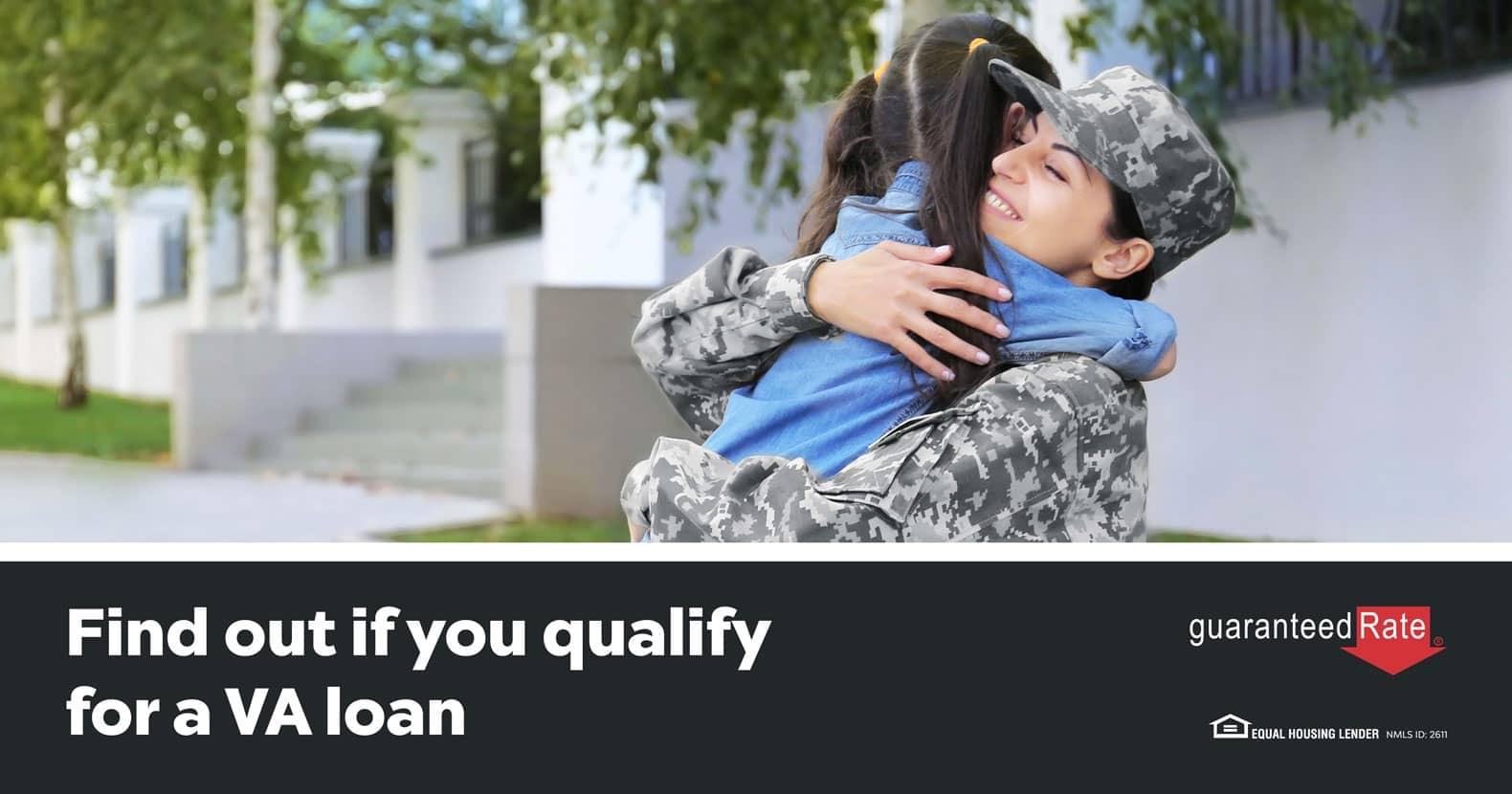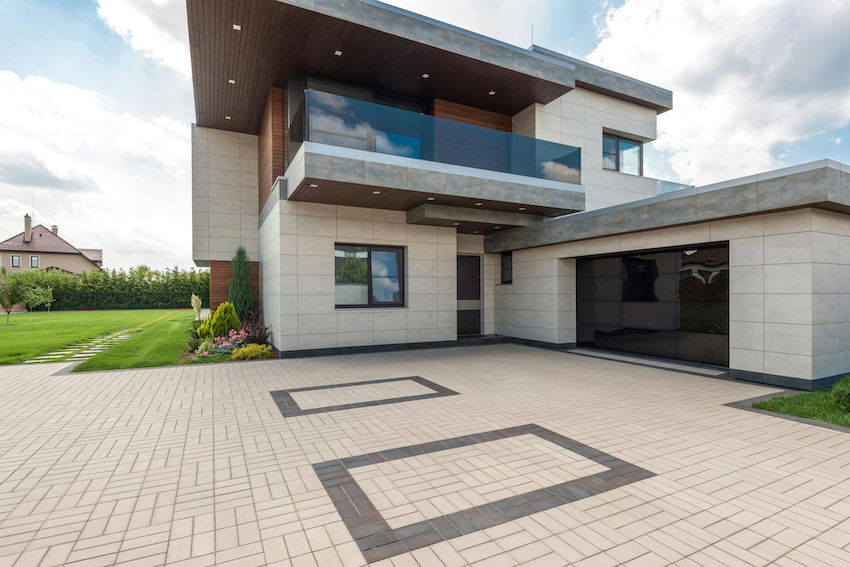VA Loans: Requirements, Benefits, Types, and More

Owning a home is a big milestone, but for service members, veterans, and surviving spouses, it doesn’t have to come with the usual hurdles.
The VA Home Loan Program, backed by the U.S. Department of Veterans Affairs, makes homeownership possible with no down payment, lower interest rates, and no private mortgage insurance (PMI). That means you could save money upfront and over time compared to conventional loans.*
But there’s more to it than just great perks. This guide walks you through everything, VA loan eligibility, requirements, loan types, and how to apply.
If you're ready to explore your VA loan benefit, check out your options with Rate and take the next step toward owning your new home.
What Is a VA Loan?
A VA Loan is a government-backed loan designed to help qualified veterans, active-duty service members, and surviving spouses buy, build, or refinance a home with better terms than most conventional loans.
One of the biggest advantages of a VA-backed home loan is that it doesn’t require a down payment, making homeownership much more accessible.
Unlike other mortgage loans, a VA-backed loan doesn’t come directly from the Department of Veterans Affairs (VA). Instead, you’ll work with a private lender—such as a bank, mortgage company, or credit union—while the VA guarantees a portion of the loan.
This VA loan benefit reduces risk for lenders, allowing them to offer competitive interest rates and more flexible loan terms to eligible borrowers.
If you qualify, a VA home loan could be the most affordable way to finance your primary residence, especially compared to an FHA loan or a conventional mortgage.
How Do VA Loans Work?
A VA-backed home loan works similarly to other mortgage loans, but it comes with exclusive benefits that make buying a home easier and more affordable.
One of the biggest advantages is that VA loans typically require no down payment, making it possible for borrowers to secure a new home without years of savings.
Unlike an FHA loan or a conventional mortgage, VA-backed loans also don’t require private mortgage insurance (PMI). This eliminates an extra expense that many borrowers face, reducing overall monthly payments.
Instead of PMI, VA loans come with a VA funding fee, which helps sustain the VA home loan program for future eligible borrowers. Some service members with a service-connected disability may qualify for a waiver and won’t have to pay this fee.
Another key requirement for securing a VA-backed loan is obtaining a Certificate of Eligibility (COE). This document verifies that you meet the necessary VA loan eligibility criteria, and it can be obtained through the VA’s official website (Gov), your mortgage lender, or a VA regional loan center.
Because of these favorable terms, many qualified veterans and active-duty service members find that a VA mortgage is one of the most cost-effective ways to buy a primary residence.
What Are the Requirements for a VA Loan?
To secure a VA-backed purchase loan, you must meet specific eligibility requirements set by the Department of Veterans Affairs and your private lender.
Service Requirements for VA Loan Eligibility
Your military service history plays a key role in your VA home loan eligibility. To qualify, you generally must meet at least one of these conditions:
- 90 consecutive days of active service during wartime
- 181 days of active service during peacetime
- Six years of service in the National Guard or Reserves
- Be the surviving spouse of a veteran who died in service or due to a service-connected disability
Credit Score and Income Guidelines
The VA itself doesn’t set a minimum credit score for a VA-backed loan, but most private lenders—such as a bank, credit union, or mortgage company—prefer borrowers with a self-selected credit score range of at least 620.
Additionally, lenders will evaluate your income and debt-to-income ratio to ensure your monthly payment is manageable. This helps determine the loan amount you can afford while keeping your VA home loan benefit accessible.
VA Loan Certificate of Eligibility (COE) Explained
Before you can apply, you’ll need a valid Certificate of Eligibility (COE) to prove that you meet the VA home loan eligibility requirements. You can request a COE through:
- The VA’s official website (Gov)
- Your mortgage lender
- A VA regional loan center
Your COE confirms your entitlement amount, which affects how much of your VA-backed loan the Department of Veterans Affairs will guarantee.
Property Requirements for VA Loan Approval
A VA-backed home loan can only be used to purchase a primary residence, meaning the property must meet specific requirements before a private lender can approve the loan. The home must be safe, structurally sound, and meet minimum property standards set by the VA Home Loan Program.
To ensure the property meets VA standards, an official VA appraisal is required. This process determines whether the home’s value aligns with the purchase price and confirms that it meets livability requirements. The goal is to ensure that eligible borrowers are purchasing a home that is a secure and worthwhile investment.
The VA loan program does not allow loans for investment properties or vacation homes. The borrower must intend to live in the home as their primary residence.
Since the VA-backed loan is designed to help veterans, active-duty service members, and surviving spouses find safe housing, the property must pass inspections that verify it meets appraised value and livability standards.
Funding Fee and Other VA Loan Costs
Most VA loans require a VA funding fee, which helps sustain the VA home loan program for future eligible borrowers. The amount of this fee varies based on:
- The loan type (e.g., VA-backed purchase loan, VA cash-out refinance, etc.).
- Whether this is your first-time using a VA loan benefit or a subsequent VA loan.
- Your down payment amount, if applicable.
Some borrowers—including those with a service-connected disability—may qualify for a VA funding fee exemption.
In addition to the VA funding fee, buyers should prepare for closing costs, though the VA home loan program limits how much lenders can charge in additional fees.
VA Loan Benefits
One of the biggest reasons buyers choose a VA-backed home loan is the range of benefits it offers.
No Down Payment Requirement
With most loan types, a down payment is one of the biggest hurdles to homeownership. But with a VA home loan, most qualified veterans and service members can skip it entirely. That means you can buy a new home without waiting years to save up tens of thousands of dollars.
Lower Interest Rates Compared to Conventional Loans
Since the U.S. Department of Veterans Affairs backs a portion of the loan, private lenders can offer a lower interest rate than what’s typically available with conventional loans.
A competitive interest rate can reduce your monthly payment and save you a significant amount over the life of your mortgage.
No Private Mortgage Insurance (PMI) Needed
Most conventional loans and FHA loans require private mortgage insurance (PMI) if you don’t put down at least 20%.
But with a VA-backed loan, there’s no PMI required—saving borrowers hundreds of dollars a month. That means more of your money goes toward your loan amount, not extra insurance.
Flexible Credit and Income Requirements
Since a VA home loan is a government-backed loan, private lenders have more flexibility with credit score and income guidelines. Even if you don’t have perfect credit, you may still qualify.
VA loans also consider residual income, which means you have a better chance of approval even if your self-selected credit score range isn’t the highest.
Limits on Closing Costs for Borrowers
Closing costs can add up fast, but a VA home loan program caps what lenders can charge buyers. The Department of Veterans Affairs also allows sellers to cover some of these costs, reducing the buyer’s financial burden.
VA Loan Assumption: What It Means for Homebuyers
A VA loan benefit many people don’t realize? VA-backed loans are assumable, meaning another qualified veteran or service member can take over your mortgage—including your current loan limits and competitive interest rate.
This can be a major advantage when selling a home, especially when interest rates are rising.
Types of VA Loans
There are several types of VA loans, each designed for a different purpose.
VA Purchase Loan
A VA-backed purchase loan helps qualified veterans, service members, and surviving spouses buy a single-family home, condo, or manufactured home with no down payment.
This means you can own a home without saving for years, and since the VA loan benefit eliminates PMI, your monthly payment stays lower. The property must meet VA loan eligibility requirements and be used as your primary residence.
VA Interest Rate Reduction Refinance Loan (IRRRL)
A VA IRRRL, or VA Streamline Refinance, helps borrowers with an existing VA-backed loan secure a lower interest rate without the usual paperwork. This government-backed loan reduces monthly payments, making it easier to afford your current home loan.
Since there’s no appraisal or income verification required in most cases, the process is fast and hassle-free.
VA Cash-Out Refinance Loan
A VA cash-out refinance lets qualified veterans refinance their current loan for a higher amount and take the difference in cash. This allows borrowers to tap into their home equity to cover debt, home improvements, or major expenses.
Unlike some types of loans, this option is open to those with VA-backed loans or even conventional loans, offering better terms than most private lender options.**
VA Construction Loans
A VA construction loan gives service members and veterans the chance to build a new home with no down payment and a VA-backed loan guarantee.
Since construction loans involve more steps than a traditional mortgage, borrowers need a VA-approved lender and a builder who meets VA loan program standards. Once the home is built, the loan transitions into a VA-backed purchase loan with competitive interest rates.
VA Renovation Loans
A VA renovation loan helps eligible borrowers buy a home that needs repairs while rolling the renovation costs into a single VA-backed home loan.
Instead of dealing with a separate legal entity for a second loan, you get one mortgage, one monthly payment, and one competitive interest rate. This option allows qualified veterans to turn a fixer-upper into a new home while keeping the VA loan benefit of no PMI.
How to Apply for a VA Loan
A VA home loan is one of the best home loan benefits available to veterans, service members, and surviving spouses, offering no down payment, better terms, and lower interest rates than most conventional loans.
If you meet the eligibility requirements, this program could make buying a new home or refinancing a current loan much more affordable. But the right lender matters too. With Rate, you’ll get expert guidance, competitive interest rates, and a seamless loan process from start to finish.
Take the first step today and estimate your monthly payments with our VA mortgage calculator.
*Savings, if any, vary based on consumer’s credit profile, interest rate availability, and other factors. Restrictions apply.
**Using funds from a Cash-out Refinance to consolidate debt may result in the debt taking longer to pay off as it will be combined with borrower’s mortgage principle amount and will be paid off over the full loan term. VA Cash-out Refinance not available in Texas. Rate, Inc. has no affiliation with the US Department of Veterans Affairs. Contact Rate, Inc. for more information
Rate, Inc. is a private corporation organized under the laws of the State of Delaware. It has no affiliation with the US Department of Housing and Urban Development, the US Department of Veterans Affairs, the Nevada Department of Veterans Services, the US Department of Agriculture, or any other government agency. No compensation can be received for advising or assisting another person with a matter relating to veterans’ benefits except as authorized under Title 38 of the United States Code.




